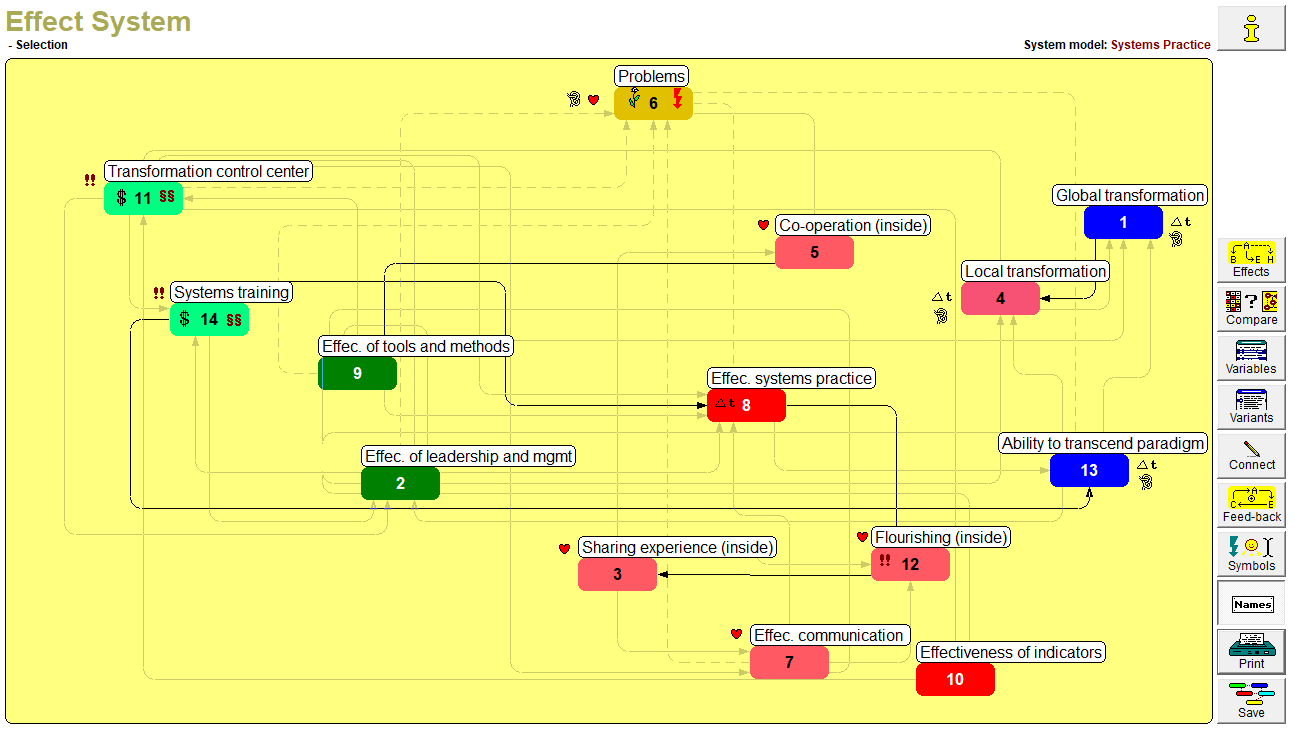# Interlinking of variables and feedback-analysis

Effect System Model from Linz meeting.
EXAMPLE: Effect System System Model Linz.BMP
# Methodical approach The pattern of the effect system should be built up independent from the influence matrix, so that eventual faults won't perpetuate from there.
First you put the variables, that are in the critical or active area of the SYSTEMIC ROLE, in the middle of the field.
From there you start by clicking the button CONNECT to enter the connections. Here you will distinguish between parallel and opposite relations for the first time.
The pattern of interactions will show much less relations than the influence matrix, because here only the real existing flow of interaction will be taken in account (and not the possible latent effects in some time).
You can now carry out a first cybernetical analysis by clicking the button FEEDBACK and i.a. recognize the controlling function of single variables and groups of variables.
# Background Information Whereas the INFLUENCE MATRIX reflects the 'genetic reservoir' of a system, included its latent possibilities, the pattern of the EFFECT SYSTEM should show its actual interrelation.
***
Here starts the visualization of the systems interrelations and thus the recognition of main focusses, structures and patterns.
***
Different from the classic methods of networking (PERT, CPS etc.), which are directed towards a particular aim, here cycles, indirect interactions and time delays play a part.
***
This way you recognize how contradictory influences regulate or disturb each other, how they are connected to others and where you may run into a blind alley.
***
The construction of the network will be eased by a special user-friendly tool, which--as well as the feedback-analysis--has been developed especially for the sensitivity model.
***
This way the significance of each variable and its connections can be understood visually in view of the sustainability of the system.